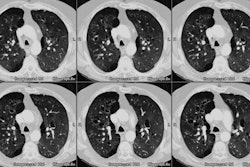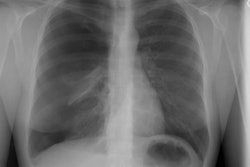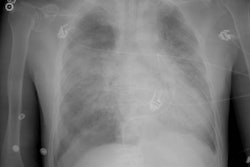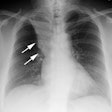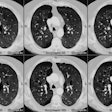Radiology 2001 Oct;221(1):207-12
Acute rejection following lung transplantation: limitations in accuracy of
thin-section CT for diagnosis.
Gotway MB, Dawn SK, Sellami D, Golden JA, Reddy GP, Keith FM, Webb WR.
PURPOSE: To evaluate the sensitivity, specificity, predictive values, and
accuracy of thin-section computed tomography (CT) for the diagnosis of acute
rejection following lung transplantation and to determine whether any individual
CT abnormalities are associated with histopathologically proved acute rejection.
MATERIALS AND METHODS: Thin-section CT studies from 64 lung transplant
recipients were retrospectively reviewed. CT studies were temporally correlated
with various grades of biopsy-proved acute rejection (n = 34); 30 other CT
studies were from a control group with no histopathologic evidence of acute
rejection. Acute rejection was diagnosed as present or absent, and the
diagnostic was calculated. RESULTS: The sensitivity, specificity, positive
predictive value, negative predictive value, and accuracy of CT for the
diagnosis of acute rejection were as follows: 35%, 73%, 60%, 50%, 53%,
respectively. No individual CT finding was significantly associated with acute
rejection. The sensitivity of CT for the detection of various grades of acute
rejection was 17% for grade A1, 50% for grade A2, and 20% for grade A3. The
combination of volume loss and septal thickening, with or without pleural
effusion, was never seen in the absence of acute rejection. CONCLUSION:
Thin-section CT has limited accuracy for the diagnosis of acute rejection
following lung transplantation, and no individual CT finding is significantly
associated with this diagnosis.
